Best Wired Microphones for singing live: Cheap and Expensive in 2022

Guide to the best handheld and wired microphones for singing live, we analyze performance and features of each mic across the price range, from the cheapest to the most expensive.
Table of Contents
Live vocal microphones guide
There were days when you just bought any handheld microphone and that was it; that’s your vocal mic. However, over the years, more and more vocal microphones have appeared in a market that is now saturated with options with vastly different features and responses. It can be quite overwhelming to select a microphone for speech these days and defaulting to a specific microphone for popularity alone may not be optimal for the type of vocal sound you want.
By now many are familiar with the legendary SM58 and some of you may want to switch tonal directions. Or maybe you’re looking to get your own microphone that’s well suited to your voice. Getting the right microphone for singing is the most important improvement you can make as a singer.
You may also want to see our guide of cheap XLR and USB condenser mics.
Selecting the right microphone for your voice
To get you started, this guide features a selection of 15 different vocal mics from a total of nearly 100 microphones for singing that we considered in our initial list. Each microphone for singing has its pros and cons which we have outlined to give you a better idea of what you might be looking for.
We prioritize mics for singing that are good for live music vocals. Although as a bonus, some of the selected vocal microphones are also viable for use with acoustic instruments and amplifiers. Furthermore, many of them are also suitable for studio use.

This guide is about wired microphones, although some can be adapted for wireless use: So if you need to go wireless, read our Wireless Microphone System Guide.
The best mic for singing by price range
If you’re looking to buy your first good microphone, don’t be intimidated by all the technical jargon, just look for one in your price range that is highly rated, like the ones below. Over time, as you gain more experience, you will begin to understand microphones much better, and in the future you will be able to purchase higher performance microphones with confidence.
If you’re still not sure which mic to buy, post a question in the comments below and describe the type of music you sing and other instruments you might want to use with the mic, and we may be able to help you with some custom advice.
See our guide of the best ways of make Beats free online.
The best microphones for live singing under $100
- Sennheiser e835
- AKG D5
- Shure SM58 LC
While not exactly the cheapest, most “industry standard” speech microphones start at this price.
Sennheiser e835
Street price: $100

The Sennheiser e835 is the company’s contender in the category of microphones for singing under $100, which compares it to the Shure SM58. It features an internal shockmount to reduce handling noise and a maximum SPL of 150dB for loud sound sources like aggressive vocals and yelling. The e835 was designed to have a consistent pickup point within the polar pattern with minimal change in pitch due to proximity effects.
Specifications of the Sennheiser e835
- Type: Dynamic
- Polar Pattern: Cardioid
- Frequency Response: 40Hz – 16kHz
- Max SPL: 150dB
- Power Requirements: None
Pros of Sennheiser e835
Users who have experience with the Shure SM58 note that the Sennheiser e835 has more presence than its competitor. While that is a broad statement to make, the e835 has a boost at a different frequency center than the SM58, it all comes down to where its sibilant tones are.
Cons of Sennheiser e835
While mic pickup levels are more or less even, some have noted that the low end of the e835 can get dirty or pick up instruments in the background like bass a bit more prominently. Some also mentioned that the proximity effect requires only a little post-EQ to administer.
Overview of Sennheiser e835
If you’re looking for an alternative to the Shure SM58, or if you find that the 58 doesn’t match your usual “s” and “sh” sounds, go for the Sennheiser e835. If you’re looking for a switch version, the e835-s is available for a bit more; aside from the switch, they are completely identical.
Sennheiser e835 polar pattern and frequency response table:


Manufacturer Website: Sennheiser
AKG D5
Street Price: $99

AKG describes the D5 as a mic “designed to cut through the mix” while offering maximum feedback and handling noise suppression. The Varimotion laminated diaphragm, along with a dual internal shock mount, ensures the microphone remains quiet on stage even with a lot of movement.
AKG D5 Specifications
- Type: Dynamic
- Polar Pattern: Supercardioid
- Frequency Response: 70Hz to 20kHz
- Impedance: 600 ohms
- Maximum SPL: 147 / 156dB SPL (for 1% / 3% THD)
- Power Requirements: None
Pros of AKG D5
Users note that this mic feels like a definite upgrade from their previous mic (which is typically a Shure SM58 in many of the reviews). They note that the sound can be described as a ‘cleaner, more present Shure SM58’. They also loved how resistant it is to feedback and handling noise. One mentioned that this is their go-to microphone for live performance recording. Low frequencies are also picked up well by the microphone, making it excellent for bass and baritone singers.
Cons of AKG D5
While resistant to feedback with proper handling, due to the design and polar pattern, regular mic cuppers will make the microphone even more prone to feedback. Users do not recommend the microphone to people who have poor microphone technique or who get their vocal sound from holding the microphone.
Overview of AKG D5
If you’re looking for pristine vocals with a strong yet controlled low end, excellent handling, and feedback suppression for singers who don’t wrap mic balloons, the AKG D5 is a reasonably priced choice.
AKG D5 Polar Pattern and Frequency Response Chart:

Manufacturer Website: AKG
Also check out our review of the best cheap acoustic drums kits for beginners.
Shure SM58LC
Street Price: $99
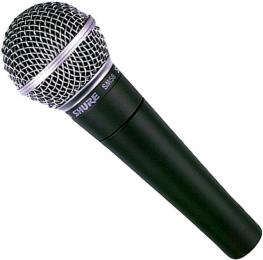
This is the best value handheld vocal microphone under $100.
Shure released the SM58 in 1966 and the basic design hasn’t changed since then.
Although there are a growing number of audio engineers who think it’s about time we all switched to more modern microphones, and despite all the advances in vocal mic design over the last 50 years, the SM58 remains extremely popular.
These were the first serious vocal mics I owned and I and my bandmates put them to good use both in concert and for recording demos, and I have to say that after the years of abuse we put them through, I can’t recall one would break down or failing anyway, these are built to last.
Most modern mics for singing do not have the severe drop of the SM58 between 7 and 8 kHz, but interestingly this ‘deficiency’ has become part of the characteristic sound of the microphone. When you sing one of these you sound like many of the rock stars of the last few decades and I think this is part of the reason the SM58 continues to top the bestseller lists in so many music stores.
Shure SM58LC Specifications
- Type: Dynamic
- Polar Pattern: Cardioid
- Frequency Response: 50Hz to 15kHz
- Impedance: 300 ohms
- Applications: Live vocals, also good for live instruments and amps
- Power Requirements: None
Some people get confused by the different versions of the SM58, but it’s pretty simple: this is the SM58-LC which doesn’t have an on/off switch, there’s also the SM58S which has a switch, and finally the SM58-CN which doesn’t have an on/off switch, but it comes with an XLR mic cable.
Pros of Shure SM58LC
With so many microphones for singing now available, it’s impressive how the Shure SM58 remains the industry standard vocal mic. Without a doubt, the most common positive mentioned in both customer and expert reviews is the durability and high build quality of the SM58. This is closely followed for its versatility as people use it not only for vocals but also for mic amps and even drums in live shows.
Cons of Shure SM58LC
There were no consistent complaints about this version, the SM58-LC, although some people reported issues with the switch becoming ‘scratchy’ on the SM58S version. Some people commented that they had unknowingly bought a counterfeit SM58 and some say that Shure confirmed it. To avoid this problem, only buy from a known retailer.
Overview of Shure SM58LC
If you want that classic rock vocal sound, this is a great mic to get. Even if you get over it later, it will probably outlast your singing career and you’ll find plenty of other uses for it if you get a more expensive mic at a later stage.
Shure SM58 Frequency Response Chart:
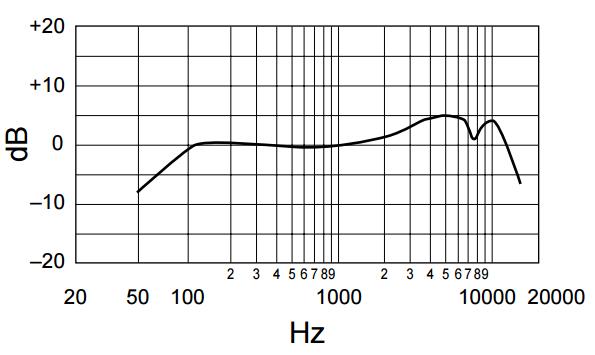
Shure SM58 Polar Pattern Chart:
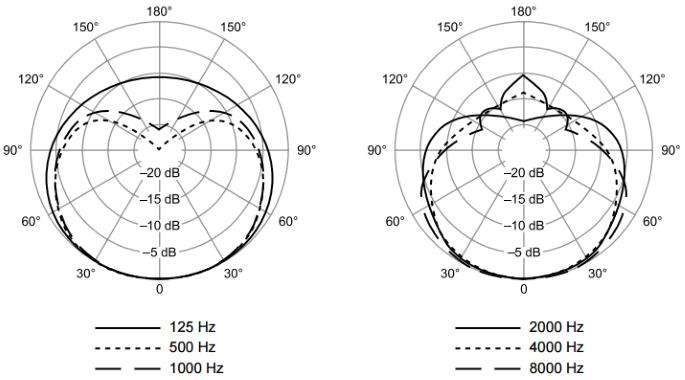
Manufacturer Website: Shure
You may also see our guide of the best DAW for recording music with your PC, Mac or Linux.
The best mics for live singing under $200
- Shure Beta 58A
- Sennheiser e945
- Sennheiser e935
In this price range there is a genuine increase in quality compared to the previous ones, so if this is your price range, take a look at the options below.
Shure Beta 58A
Street Price: $159

This is Shure’s more exclusive sibling to the SM58.
The Shure Beta 58A is a dynamic microphone with a supercardioid pattern, which allows for better response and resistance to noise. But what separates it from the SM58 is its brightened midrange, which is due to a presence boost within 4kHz and 9kHz.
There’s also bass rolloff to further boost the treble, making the resulting sound clearer and workable for many different timbres and vocal styles.
Finally, the microphone capsule is supported by an internal shockmount to prevent handling noise.
Shure Beta 58A Specifications
- Type: Dynamic
- Polar Pattern: Supercardioid
- Frequency response: 50Hz-16kHz
- Impedance: 350 ohms.
- Maximum SPL: 150dB
- Applications: Live and recorded vocals
- Power Requirements: None
Pros of Shure Beta 58A
Those who aren’t too happy with the SM58’s rounder sound and bass emphasis felt right at home with the Shure Beta 58A’s clearer sound. Many of the high ratings come from singers who prefer its supercardioid pattern, which allows them to play an instrument and sing at the same time with less bleed compared to regular cardioid microphones. Durability is also highly appreciated, with some even saying you can use the mic to drive a nail.
Cons of Shure Beta 58A
With so many different vocal timbres, the Beta 58A just isn’t enough to cover them all. As such, there are some who are not happy with the extra high effects.
Overview of Shure Beta 58A
If you’re looking to add clarity and presence to your vocal sound or find that the SM58 makes your voice sound boomy in the low end but want to change that with a more upper-mid presence, then the Shure Beta 58A is ideal for you.
Shure Beta 58A Frequency Response Chart:

Shure Beta 58A Polar Pattern Chart:

Manufacturer Website: Shure
Sennheiser e945
Street price: $200

The Sennheiser e945 has a hum-compensating coil to reduce electrical interference and is shock-mounted to reduce handling noise.
Proximity effects are reduced and rugged, precision German engineering adds to its long-term durability.
Sennheiser e945 Specifications
- Type: Dynamic
- Polar Pattern: Supercardioid
- Frequency Response: 40Hz to 18kHz
- Impedance: 350 ohms with the recommended minimum termination impedance of 1000 ohms.
- Power Requirements: None
Pros of Sennheiser e945
Customer reviews consistently mention how clear the sound is. Many also attest to its versatility because you can also use it for instruments and even amps. The build quality and its sturdiness also came up many times in reviews and comments.
Cons of Sennheiser e945
There were no constant complaints apart from a few people who were used to the SM58 and had a hard time finding the right EQ settings when they switched to it.
Overview of Sennheiser e945
The Sennheiser e945 is designed and built in Germany to high standards. If you want a high-quality microphone that is plug and play and will complement a wide range of vocal styles, this is one of the best options for you. It’s also versatile enough to mike instruments with flying colors.
Sennheiser e945 frequency response table:

Sennheiser e945 polar pattern table:

Manufacturer Website: Sennheiser
Sennheiser e935
Street price: $200

This is the most appreciated handheld microphone between $100 and $200.
Sennheiser designs and manufactures its microphones in Germany and its microphones for speech are considered to be very well designed. The e935 is no exception; Aimed at natural-sounding vocal captures, the e935 is designed to be relatively flat in the midrange with a slight high-frequency boost.
This makes it perfect for vocals that need to fit well with genres like jazz, where vocals need to be as natural as possible.
The e935 has a damped capsule to reduce handling noise and a hum-compensating coil to reduce electrical interference.
Specifications of the Sennheiser e935:
- Type: Dynamic
- Polar Pattern: Cardioid
- Frequency Response: 40Hz to 18kHz
- Impedance: 350 ohms
- Max SPL: 155dB
- Applications: Live vocals, some use it for acoustic guitar microphone.
- Power Requirements: None
Pros of Sennheiser e935
Many customers who have reviewed the e935 say that it sounds very ‘natural’, this is due to the relatively flat frequency response it has over most of the vocal range with no steep dips and a bit of boost in the high end. They also frequently mention how well built and durable it is.
Cons of Sennheiser e935
It’s really hard to find someone who seriously criticizes this microphone; If you know of any complaints about this microphone, please post them in the comments below.
Overview of Sennheiser e935
The Sennheiser trademark has earned a great reputation for quality and many owners say that the e935 is not only the best dynamic microphone in this price range, it is equal to the highest rated microphones for singing, even when compared to condenser microphones with which it competes.
Sennheiser e935 frequency response table:

Sennheiser e935 polar pattern table:
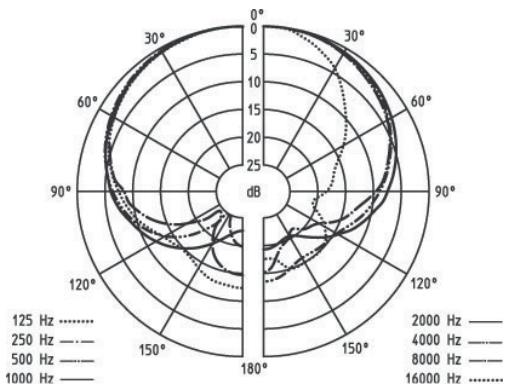
Manufacturer Website: Sennheiser
Have you try the free Plugin Camel Crusher to colour or distort your voices.
Best Live Vocal Microphones Under $300
- Shure Beta 87A
- Shure Beta 87C
- Shure Super 55 Deluxe
- Heil Sound PR 35
In this price range there is a genuine increase in quality compared to the previous ones, so if this is your price range, take a look at the options below.
Shure Beta 87A
Street price: $249
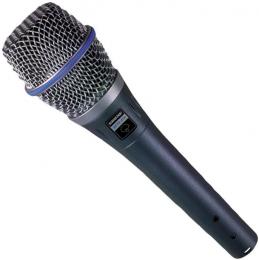
This is the most valued handheld microphone between $300 and $500.
The Shure Beta 87A is a condenser microphone designed for the stage, with its comfortable handheld profile, quiet operation, and noise reduction feature. Right off the bat, this mic comes with a supercardioid polar pattern that better rejects stage/background noise. Along with its built-in low-frequency rolloff and pop filter feature, the Shure Beta 87A also eliminates issues like proximity and plosives.
While it is a common assumption that condenser microphones for singing are not as reliable as dynamic microphones, the Beta 87A is reliable enough to be used by many popular singers and sound engineers.
Shure Beta 87A Specifications
- Type: electret condenser
- Polar Pattern: Supercardioid
- Frequency Response: 50Hz to 20kHz
- Impedance: 150 ohms
- Max SPL: 140.5dB
- Applications: Live and recorded voiceovers and even live broadcasts
- Power Requirements: 11V to 52V phantom power
Pros of Shure Beta 87A
More and more singers are switching to the Shure Beta 87A from the SM58, thanks to testimonials from former dynamic microphone users who are very impressed with the improvements this microphone has brought to their sound. The quiet operation and clarity come up quite often in reviews, while others thank Shure for making this microphone solid and reliable despite being a condenser.
Cons of Shure Beta 87A
Not much to report apart from a few warning that improper mic handling, such as covering the capsule, can cause feedback, which is to be expected given this is a supercardioid pattern condenser mic.
Overview of Shure Beta 87A
Some say you can’t buy peace of mind, but the Shure Beta 87A comes pretty close. Get it if you’re curious about the sound of the condenser microphone but don’t want to stray too far from the sound of the house of Shure.
Shure Beta 87A Frequency Response Chart:

Shure Beta 87A Polar Pattern Chart:

Manufacturer Website: Shure
Shure Beta 87C
Street price: $249
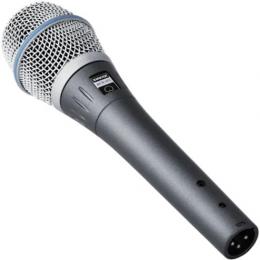
The Shure Beta 87C is the cardioid variant of the Beta 87A.
In contrast to the “A” variant, the 87C sports a narrower cardioid pattern for better rejection of sound towards the rear of the microphone. This makes it better for loud stage monitors that can cause unwanted feedback. Despite the slightly different frequency curve caused by the different polar pattern, the 87C retains much of the character of its “A” variant sibling.
Shure Beta 87C Specifications
- Type: Dynamic
- Polar pattern: cardioid
- Frequency response: 50Hz-16kHz
- Impedance: 150 ohms
- Max SPL: 139dB
- Power Requirements: None
Pros of Shure Beta 87C
People who liked the way their voice sounded on the 87A but didn’t have in-ear monitoring systems wanted a cardioid variant for longer. The 87C gets high praise for delivering on the promise of a less feedback-prone version of the 87A. Many were pleased to see that the microphone can be given more gain compared to the “A” variant.
Cons of Shure Beta 87C
Some report a slight difference in frequency response with the 87C, which is natural as it has been designed with a different polar pattern.
Overview of Shure Beta 87C
If you’re looking for a studio-sounding stage microphone for higher stage volumes with floor monitors, the Beta 87C is an excellent choice, especially if you’ve tried the 87A but experienced feedback issues.
Shure Beta 87C Frequency Response Chart:

Shure Beta 87C Polar Pattern Chart:
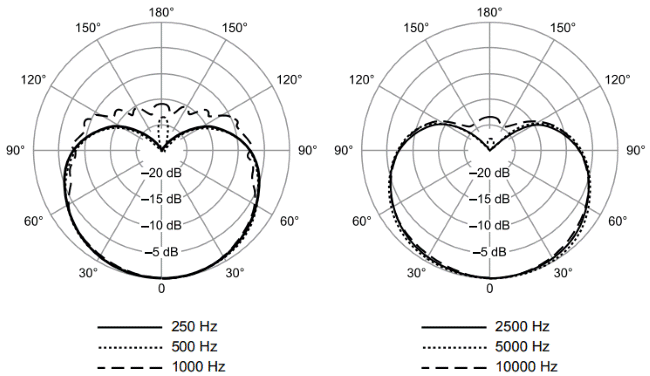
Manufacturer Website: Shure
You may be interested in our review of the best basses for beginners.
Shure Super 55 Deluxe
Street price: $249

Aesthetics are often secondary to function when it comes to microphones for vocals, but for some creative artists, it’s all about image and stage presence. The Shure Super 55 Deluxe is a vintage-looking dynamic microphone with modern sound and functionality.
Featuring an art deco-inspired satin chrome casing, the Super 55 Deluxe features a supercardioid dynamic microphone capsule designed for clear, modern sound.
Shure Beta 87C Specifications
- Type: Dynamic
- Polar Pattern: Supercardioid
- Frequency response: 60Hz-17kHz
- Impedance: 150 ohms
- Power Requirements: None
Pros of Shure Super 55 Deluxe
Many users who were drawn to the microphone’s aesthetics were pleased to find that there were no compromises in sound and function along with form. Some mentioned that it sounded better than the SM58. Others noted that he inspired confidence when singing with his appearance.
Cons of Shure Super 55 Deluxe
Some reported that the mic had some trouble handling the explosives. It is necessary to make some adjustments to the microphone technique to avoid this.
Overview of Shure Super 55 Deluxe
If you want to look sharp and sound great on stage or screen, the Shure Super 55 Deluxe is a great nostalgic looking piece that is sure to turn heads and turn heads.
Shure Super 55 Deluxe Frequency Response Chart:

Shure Super 55 Deluxe Polar Pattern Chart:

Manufacturer Website: Shure
Heil Sound PR 35
Street price: $269
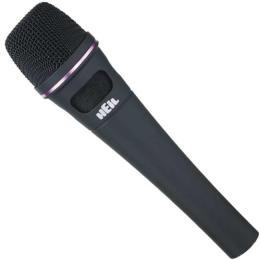
In recent years, Heil Sound has seen a resurgence in popularity. It is fast becoming a household name in many underground rock and metal scenes around the world. The Heil Sound PR 35 is tuned to have a natural-sounding upper midrange with smooth, even response across the spectrum.
The result is a microphone that captures vocals in great detail and is easily augmented with additional post processing.
Specifications of the Heil Sound PR 35
- Type: Dynamic
- Polar Pattern: Supercardioid
- Frequency response: 40Hz-18kHz (UP- no filter) / 80Hz-18kHz (DOWN- filter on)
- Impedance: 370 ohms
- Max SPL: 140dB
- Power Requirements: None
Pros of Heil Sound PR 35
Although many reviews claim the Heil Sound PR 35 performs well in any situation, on vocals it gains a particularly large fan base of rock and metal singers who find the flat, smooth response ideal for harsher singing and yelling without annoying high frequencies. The supercardioid pattern also helps singers who prefer to position the microphone in a cup shape; Although not an optimal technique from an engineering point of view, the sound of Heil never sounded square to many engineers.
Cons of Heil Sound PR 35
While PR 35 has a response that benefits greatly from processing, on its own, it sounded bland to some.
Overview of Heil Sound PR 35
If you’re looking for a microphone that captures natural vocals and reproduces well with post-processing, the PR 35 is an excellent choice. While not as relevant to this guide, it also sounds great on electric guitar amps and cabinets from my personal experience.
Heil Sound PR 35 polar pattern table:

Heil Sound PR 35 Frequency Response Chart:

Manufacturer Website: Heil Sound
See our guide of the Best MIDI controllers for recording and for making Beats.
The best microphones for live vocals under $500
- Beyerdynamic M 88 TG
- Shure KSM8
- Sennheiser e965
These are great mics for singing that are starting to implement more sophisticated technologies and better build quality.
Beyerdynamic M 88 TG
Street Price: $399

This is the highest value handheld vocal mic between $300 and $500 along with the Shure KSM8 and the Sennheiser e965.
Popularized by Phil Collins, the Beyerdynamic M 88 TG is a hypercardioid pattern dynamic microphone designed for rigorous touring use. The TG stands for “Tour Group” and is equipped with a reinforced basket to withstand rough handling and damage.
Tone, the M 88 TG favors a rich low, mid and low frequency range without sacrificing higher frequency response.
Specifications of the Beyerdynamic M 88 TG
- Type: Dynamic
- Polar Pattern: Hypercardioid
- Frequency response: 30Hz-20kHz
- Impedance: 200 ohms
- Power Requirements: None
Pros of Beyerdynamic M 88 TG
The M 88 TG was praised by users for its low frequency richness. The microphone added warmth and body to the female singers, while the male voices take on more authority and depth.
Cons of Beyerdynamic M 88 TG
Some found the microphone prone to feedback at higher stage volumes.
Overview of Beyerdynamic M 88 TG
The Beyerdynamic M 88 TG earned its reputation as the “Phil Collins microphone”, but that doesn’t mean it only suits your particular type of voice. The M 88 TG excels at adding weight to thinner vocals and authority to deeper ones.
Beyerdynamic M 88 TG polar pattern chart:

Beyerdynamic M 88 TG frequency response table:

Manufacturer Website: Beyerdynamic
Shure KSM8
Street Price: $399
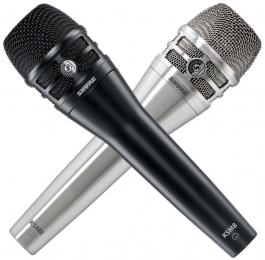
This is the most highly regarded handheld vocal mic between $300 and $500 along with the Beyerdynamic M 88 TG and the Sennheiser e965.
With its dual-diaphragm design, the KSM8 is not your run-of-the-mill handheld microphone for singing.
The design was implemented to reduce its proximity effect, making it perfect for singers who get closer to the microphone.
A large sweet spot allows singers who also play instruments to be picked up consistently when the microphone is on a stand.
Shure KSM8 Specifications
- Type: Dual Diaphragm Dynamic
- Polar Pattern: Cardioid
- Frequency response: 40Hz-16kHz
- Impedance: 300 ohms
- Power Requirements: None
Pros of Shure KSM8
One thing users consistently praise the KSM8 for is its consistency in both proximity and on-axis. They mention that their voices sound consistent in pitch even off-axis. Vocalists with instruments love the microphone for this reason, as moving around, looking down at your instrument, and basically operating around a static microphone position on a stand sounds constant.
Cons of Shure KSM8
There were no consistently reported complaints, however one owner noted that long-term durability may be an issue as his unit broke down after a few months.
Overview of Shure KSM8
If you’re looking for a mic that will handle dynamic singing, or if you want a mic for a vocalist / instrumentalist that sounds consistent, the Shure KSM8 is an excellent choice if you can beat the price of admission.
Shure KSM8 Frequency Response Chart:

Shure KSM8 Polar Pattern Chart:
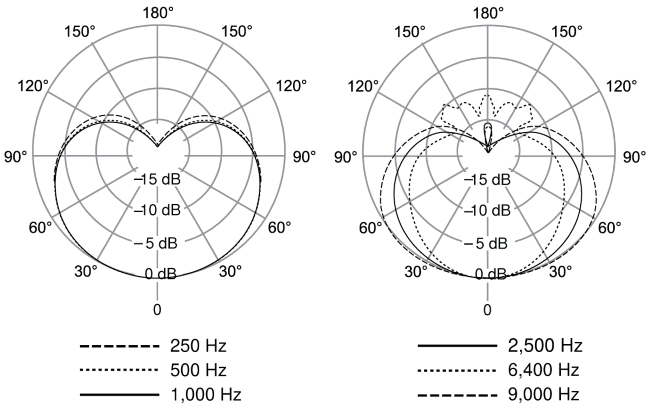
Manufacturer Website: Shure
Sennheiser e965
Street price: $400

This is the preferred handheld vocal mic between $300 and $500 along with the Beyerdynamic M 88 TG and Shure KSM8.
The e965 is Sennheiser’s premier live vocal microphone. It was designed to be able to capture sound sources as close to studio quality as possible in live situations.
The e965 has features more commonly seen on studio condenser vocal microphones, such as two switchable polar patterns (cardioid and supercardioid), as well as a low cut switch. These switches are hidden under the grille to prevent accidental changes.
Specifications of the Sennheiser e965
- Type: Condenser
- Polar Pattern: Cardioid, Supercardioid
- Frequency response: 40Hz-20kHz
- Impedance: 50 ohms
- Max SPL: 152dB
- Power Requirements: +48v Phantom
Pros of Sennheiser e965
The best studio condensers generally don’t need to do much post-processing. The e965 is seen to have a similar effect with vocals. A sweet midrange coupled with an almost post-processed upper frequency range, as some reviewers noted. You don’t need to do much in the mixer to get the vocals captured by the e965 to sound their best.
Cons of Sennheiser e965
The e965 is a particularly sensitive and revealing microphone. Many who relied on the microphone to mask some of the tonal imbalances in their voices felt that they sounded “worse” on the e965.
Overview of Sennheiser e965
If you’re a confident singer who needs a microphone to reveal every nuance of your technique and studio-quality prowess, the Sennheiser e965 delivers on all fronts.
Sennheiser e965 supercardioid frequency response table:

Sennheiser e965 supercardioid polar pattern chart:

Manufacturer Website: Sennheiser
You may be interested in the best cheap electronic drum sets for home recording.
The best microphones for live singing under $1,000
- Neumann KMS 105
- Earthworks SR40V
These top-of-the-line vocal microphones get the best technology and build quality you can find and will find applications both live and in the studio. If you’re a singer looking to improve and make refinements to your sound live, or even recorded, this is the best range to look at.
Neumann KMS 105
Street Price: $699

This is the preferred handheld vocal microphone between $500 and $1000.
The Neumann brand is highly regarded with microphones for singing in studio, and that reputation carries over to their live handheld microphones as well. The KMS 105’s supercardiod polar pattern makes it exceptionally good at rejecting sound from 180° behind the microphone.
Although the KMS 105 works well for most types of vocals, Neumann also has the similar KMS 104 that is optimized for female rock and pop singers. It also uses electronic compensation to control proximity effect – it has a 120Hz high pass filter.
Michael Buble and Norah Jones are two well-known singers who use the Neumann KMS 105 in live concerts.
Specifications of the Neumann KMS 105
- Type: Condenser
- Polar Pattern: Supercardioid
- Frequency Response: 20Hz to 20kHz
- Impedance: 50 ohms – load impedance is 1000 ohms
- Max SPL: 150dB
- Applications: Live and recorded vocals + acoustic guitar recording
- Power requirements: 48V phantom power
Pros of Neumann KMS 105
Many positive customer reviews speak of how “natural” this microphone sounds and that it is the best live performance microphone they have ever owned. Noise and feedback rejection are other features that reviewers cite very positively.
Cons of Neumann KMS 105
Several owners report that unless you have a high-end PA system with good mic preamps, you won’t get the full value out of this mic and may get a cheaper one instead.
Overview of Neumann KMS 105
The Neumann KMS 105 is best suited for jazz, mid-road, pop and acoustic artists where the crystal clear sound can really shine compared to heavy metal or hard rock artists where the fine nuances of this microphone are lost on stage.
Neumann KMS 105 Polar Pattern Table:
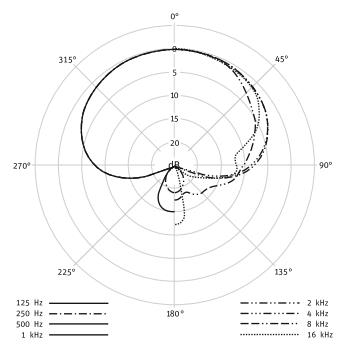
Neumann KMS 105 Frequency Response Table:

Manufacturer Website: Neumann
Earthworks SR40V
Street price: $749
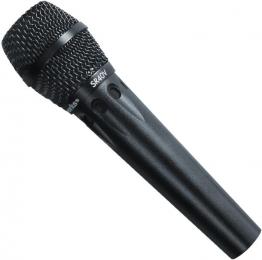
James Taylor has been using the Earthworks SR40V in his concerts since he was first introduced to them in 2011. Other Earthworks SR40V artists include Foreigner, jazz singer Candice Hoyes, and many more.
One of the reasons it’s so loved by talented singers and their audio engineers is because it has the most incredibly flat frequency response throughout the vocal range – you never need to EQ this mic. No compensatory EQ is needed. In fact, the Earthworks SR40V has the widest frequency response range of any live singing microphone I found while researching this gear guide.
Earthworks stands behind the quality of this microphone by offering a 15-year warranty.
Earthworks SR40V Specifications
- Type: Condenser
- Polar Pattern: Hypercardioid
- Frequency Response: 30Hz to 40kHz
- Impedance: 65 ohms with the minimum output load of 600 ohms
- Max SPL: 139dB
- Applications: Live and recorded vocals
- Power requirements: 48V phantom power
Pros of Earthworks SR40V
Expert reviewers who have put the SR40V through its paces are unanimous in saying that this mic truly reproduces studio-quality sound on stage. They also say that feedback rejection is excellent and that it has low handling noise characteristics. Most of them said this was the best microphone for singing they had ever used live.
Cons of Earthworks SR40V
Some expert reviewers pointed out that you need to have an excellent signal chain from the mic preamps to the FOH speakers, otherwise you simply won’t realize the benefits of a high-end mic like this.
Overview of Earthworks SR40V
If you are a singer who works with high quality public address systems, this is the best option. The SR40V expresses its full potential and complete setup and may be the last thing you need for absolutely perfect performances. It also works great for studio recording.
Earthworks SR40V Polar Pattern Chart:

Earthworks SR40V Frequency Response Chart:

Manufacturer Website: Earthworks
Things to consider when buying a microphone for live singing
- On/off switch
- Dynamic vs Condenser mics
- Fleece pattern
- Frequency response
- Proximity effect
- Impedance
- Max SPL (sound pressure level)
- Applications
- Power Supply: Phantom Power
On/off switch
This may seem like a trivial topic, but it is not. In general, you don’t want handheld vocal microphones with switches that can be easily turned off by accident. A lot of live audio engineers don’t like on/off switches because it’s really hard to troubleshoot a mic drop in the middle of a performance and frustrating when you trace it back to the singer turning it off. The exceptions are mics for singing that have lockout switches so they can’t be turned off by mistake, or if you only intend to use them for karaoke, where it’s best to turn the mic off between singers.
Dynamic vs Condenser mics
If you go back 20 years or so, you’ll usually only find condenser mics for singing in recording studios, and mostly only dynamic vocal microphones on stage, especially for vocals. This was mainly because condenser microphones were very fragile and prone to feedback.
But times have changed and advances in microphone design for vocals have meant that condenser microphones that are specifically designed to be portable are now capable of delivering ‘studio quality’ results in live performances. Dynamic mics tend to have a lower frequency range but sound “warmer”, while condenser mics tend to have a much higher frequency range and tend to sound “brighter”.
Instead, condenser microphones generally require their own power supply to function properly, either from a battery or from phantom power supplied by a mic preamp or mixing console. Dynamic mics are generally a bit sturdier than condenser mics, but if you take good care of your vocal mics, this shouldn’t be a big problem. If after reading this you’re still not sure which type of microphone would be best for you, then get one of each and spend time singing through both until you find the type that suits your voice.
Fleece pattern
This is the direction or directions in which a microphone absorbs sound. For live singing, you generally only want vocal mics that accept sound directly in front while suppressing sound coming from the back or sides; this is to reduce problems with feedback coming from stage monitors or front-of-house speakers. Most microphones for singing used in live performance have a cardioid polar pattern, or a variation of that, to help prevent feedback. The image to the right is an example of a cardioid polar pattern.
We recommend that you also visit our selection of the best cheap ukuleles for beginners.
Frequency response
Each microphone has its own characteristics in terms of what frequencies it emphasizes or deemphasizes. An ideal microphone has a flat response across the range of frequencies it responds to, however, that is only found in high-end vocal microphones. That said, some vocal mics have their own idiosyncratic frequency responses that give them a characteristic sound that musicians really love in certain styles of music; the classic rock vocalist sound of the SM58 is a great example.
If you have a high-pitched voice, you may want to be careful about using a treble-emphasizing microphone because without the proper equalizer, this could make your singing sound harsh. In case you have a low register and you really want to emphasize it, then you can look for microphones for singing that are loud below 200Hz. If you know your vocal characteristics well, then I will find frequency response tables very helpful. If all of this sounds too technical and leaves you unsure, then get a microphone that is often used in the style of music you play and you shouldn’t have any problems.
Proximity effect
When you get very close to any type of directional microphone, one that does not have an omnidirectional polar pattern, you will notice an increase in the volume of the low frequencies. This can make your voice sound warmer. Cardioid dynamic microphones generally have the strongest proximity effect and are often used well by male singers and rappers live. Some manufacturers provide data on the proximity effect of their microphones, and when they do, you’ll see an additional line showing it in the microphone’s frequency response table.
Impedance
Without getting too technical, impedance can best be thought of as the amount of resistance an electronic device has to electrical current passing through it. A microphone should only be connected to equipment that has the same or a higher impedance rating, otherwise you will get signal loss.
Most handheld mics are low impedance (below 600 ohms), so they generally don’t have a problem when used with ‘pro’ sound equipment. If you’re unsure of the equipment you’ll be using your microphone with, such as a low-cost consumer karaoke machine, it doesn’t hurt to check that the microphone you want to buy has the same or a lower impedance than the system you’re going to plug it into; you can check the manuals or spec sheets for both devices to make sure.
Max SPL (sound pressure level)
This indicates the maximum volume, measured in decibels (dB), that a microphone can be exposed to before it starts to have problems like distortion. Very few people can sing loud enough to worry about this, but if you’re also going to be using your mic on amps or loud instruments like drums, then you should go for a mic with a high max SPL. If you’re not sure how loud something is you can measure it with an SPL meter – I have an app on my phone that does what is accurate enough for this purpose, alternatively you can buy hardware SPL meters which tend to be more accurate.
You may also be interested in this excellent selection of the best free online virtual drum machines.
Applications
This equipment guide focuses primarily on microphones for live singing. Some good live microphones for singing can also be used for other applications, such as recording or miking some types of instruments and/or amplifiers. A good live condenser microphone will usually also work for recording vocals or even an acoustic guitar. Good dynamic mics sometimes work well for miking amps both live and for recording. If you also like to record at home, getting a versatile microphone that can be used for multiple applications will allow you to get more bang for your buck.
Power Supply: Phantom Power
Dynamic microphones generally don’t require power to operate, but condenser microphones do. Some take batteries and others require phantom power. Most live mixers these days provide phantom power, but not all do. If your microphone requires phantom power and your mixer doesn’t provide it, you’ll need a mic preamp or vocal effects processor to provide the power. Note that for Dynamic Mics you can get a device like the Cloudlifter CL-1 to boost the mic signal, but these in turn generally require phantom power to work.
Best Portable Microphone For Singing Selection Methodology
We first searched the market for popular and highly rated wired handheld microphones for singing that can be used for live vocals, including popular dynamic and condenser microphones. Then we narrowed our scope to those that are widely available at major US retailers, and still ended up with big numbers: 85 as our initial shortlist, along with over 49,000 relevant reviews, ratings, and recommendations, including the most recent until the end of April 2021.
We recommend that you also visit this tutorial on how to sing and play the guitar at the same time.
For more information see the GEARanking guides.




This is the best review I have read. Very concise and educational. What a website for helping singers and musicians choose a microphone best for them. So well detailed and explained to easily show that all the information is coming from one very educated in microphones and music. Can not thank you enough for all the information that is given so professionally.
.